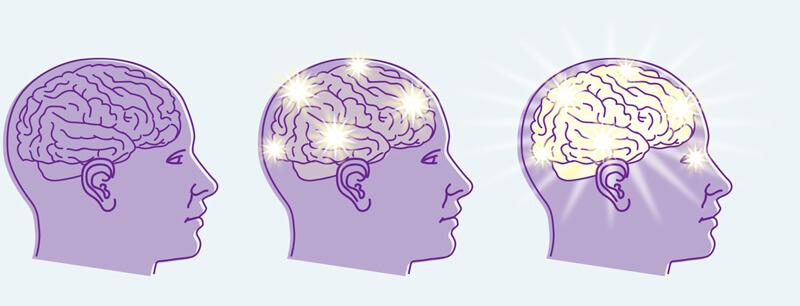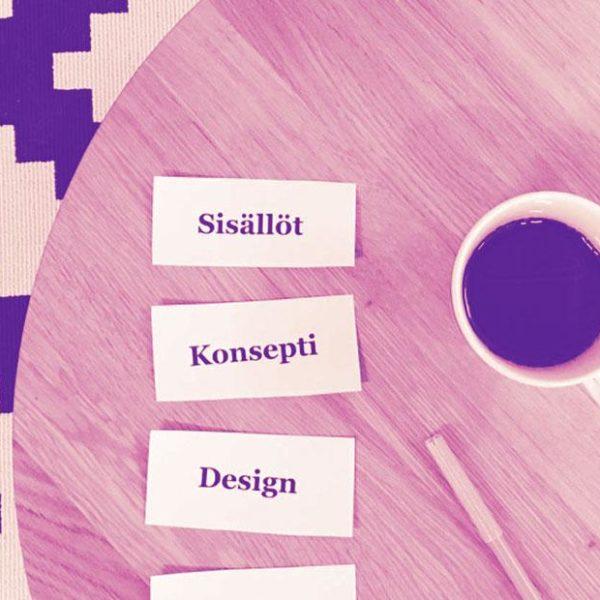Good Design Needs Good Content – the Role of Content in Web Design
When redesigning a website, people tend to think about a sparkling new layout, flashy pictures, spaciousness, and exciting modern features. All of these things have their place, and of course it's important to amaze the user. But it's even more important that they find relevant information easily and understand it. A website project is a lot like moving from one house to another. If you take the time to make the hard decisions about what to take with you and what to throw away, you'll get a clearer and more user-friendly end result.
Who would want an old chaotic cupboard in their new apartment? A lot like your old apartment, the old website has gradually gathered random stuff no one really has control over. New texts may have been added without a clear vision for the best location on the website. “Let’s just fit them somewhere” is a surprisingly common way of organizing information. The company may have taken a new direction, leaving the old material unsuited for the service the company presently provides.
What will you pack?
Moving house is a great opportunity to go through your things and organize items logically. The same way you can hire a professional organizer to help you move, you can also get help to organize the content for your new website.
We recommend bringing out the big guns when going through your content. Current state analysis and content audit are tools that provide hard data about what works and what doesn’t on the website. These processes help you edit the content to match your current needs and target the right audience.
Outside perspective often identifies the problems of the old content more clearly: maybe no one dared touch John’s poor piece of content because John is a standout guy. The design of the new site is a good guide when the time to decide comes. Design isn’t just a sugar coating for the site structure but also has an essential function when it comes to content: the colors, element sizes, and buttons indicate the importance and hierarchy of the content.
Visual design lets you define which elements scream out or whisper and which elements you want the reader to click or pay close attention to. If all elements scream out, nothing gets highlighted. Content should consist of carefully considered and organized information rather than random texts. Goals and user journey should guide the website project. After that, content designers and visual designers should define the need and respective hierarchy for content elements, such as teasers, text blocks, pictures, and forms – together.
Who carries the boxes?
Using content professionals already pays off when you consider that they can also do the content input for the new site. This also helps in the visualization and building of the site. Using Lorem Ipsum never gives a completely accurate estimate of the end product, as the content input process may have a surprising effect on content length. If there is need for design changes in the content input phase, they can be completed in a flexible manner inside the team.
Unpacking – how content is linked to design
The older the website, the more static it is to begin with. Back in the day, content input could mean adding a short paragraph of text in the middle of various menus.
Today, websites are browsed on all kinds of devices, and people’s level of concentration is a bigger restriction than the number of pixels. The most important goal is to instantly give the reader an understanding of what’s available and what they are supposed to do.
Three ways to get there
1. Define information architecture
2. Create informative and clear-cut content that guides the reader
3. Create a visual style that supports content and hierarchy
With any luck, you might be able to put together a reasonable website with your old content. However, analyzing and rationally organizing your content and its structure cuts away irrelevant material. It notably benefits the design phase too.
When the content has been mapped, organized, cleaned, and edited to a modular structure, the coding phase is faster and it’s easier to do changes in the future. Avoiding too many content elements clarifies your visual brand identity. It’s easier to keep the visual brand elements, such as lines, colors, icons, and pictures in check when you stick to a reasonable number of modules.
If you want to get all the possible benefits from website redesign, invest in content and structure at least as much as you invest in the visual design. Streamlining the whole website so that content and design go seamlessly hand in hand serves your customers better and makes the site easier to use and develop further.
A rough take on the options for website redesign

1. Website redesign with old content
Content types can be examined and modules planned accordingly. If the content is diverse and irregular, however, it might be hard to build clearly defined modules. This can bring extra expenses in the design and coding phases. Website redesign also often includes making changes to structure, which may make the old content challenging to transfer.
2. Website redesign with upcoming content
GDD is the way to go when there’s little clear-cut content available. There’s no need to build complex modules and hypothesize about the future. In GDD, the website and its elements are built bit by bit as needs arise. At the beginning, the website can be stripped-down, but as services expand, the content modules and the website are developed accordingly.
3. Website redesign with new content
When the old content has been analyzed, organized, and streamlined, new user-friendly modules can be planned and built to meet wide-ranging demands. This saves time and money in the coding phase. Streamlining the content also makes it clearer, more controlled, and more suited for customer needs.
